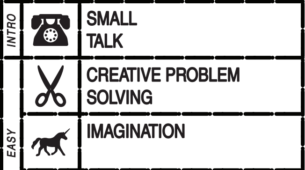 Name: Two Dots
Name: Two Dots
Creator: PlayDots, Inc.
Platform: iOS, Android
Target Audience: Players that like destressing games or simplistic puzzle games,
Through playing Two Dots, I noticed the core mechanic of this game which is connecting same colored tos in horizontal and vertical lines creates a puzzle experience with lots of variation. By slowly introducing new mechanics into the game such as

anchors and fire, the game always keeps players in loop by maintaining a good challenge and satisfaction for players. I also noticed that the game is designed in a way that evokes discovery, challenge, and sensation(through their visuals) which are some of the core aesthetic goals in the MDA framework.
Now to go over how the game goes: in each level, each player must complete a certain set of goals using limited moves. To do this, the user is given a board of colored dots to work with. In playing this game, indulging in the core mechanic of connecting dots brings a very satisfying feel due to the detailed animations and tactile interaction. In my experience, seeing all the dots of a color vanish once I formed squares made me feel very joyful and satisfied with the game. I also noticed as I played Two Dots that it continues to introduce constraints that shape the experience such as fire that spreads that needs to be extinguished. These additions shift the dynamics from casual matching to deep tactical thinking. The player is constantly adapting to new rule combinations while still engaging with the same fundamental action: draw a line. I also like how they incorporated the formal element of conflict through time constraints and limited moves because it makes me feel like I need to get creative. I also feel like I can get creative with how I eliminate dots because as the screenshot says, “connections can be any shape” meaning I have to explore which shapes will be more efficient.
Compared to narrative puzzle games like Monument Valley or object-based ones like The Room, I noticed that Two Dot have more of a minimalist and abstract vibe. There’s no story to follow and no objects to rotate or examine. I feel that the thing that makes Two Dots stand out is how it layers complexity without overwhelming the player too much. I also love how the mechanics are introduced because of the way they use animation. While this game is fun, players might feel influenced
 towards in app purchases as they obtain higher levels which can cause tension between fun puzzle solving and monetization. For example, when I failed a level, it gave me the opportunity to keep playing if I spent coins that I would have to pay money for, as shown in the screenshot below.
towards in app purchases as they obtain higher levels which can cause tension between fun puzzle solving and monetization. For example, when I failed a level, it gave me the opportunity to keep playing if I spent coins that I would have to pay money for, as shown in the screenshot below.

Ethics
While Two Dots is accessible in so many ways such as being language-free and color-coded, it does make many implicit assumptions. For example, this game heavily relies on a person’s ability to differentiate colors which could be an accessibility issue for people who are colorblind or have color vision problems. In addition to this, I also notcied that people who have really strong pattern recognition and sequencing skills will succeed in this game; however, this could slightly exclude players who are not as experienced with spatial planning or have cognitive impariements. Also, like I said earlier, the monetization of lives and powerups are socioeconomic assumptions that that their users can afford to pay which is also harmful to players.
Overall, Two Dots was a very enjoyable puzzle game whether it was through its visual components or how it destressed me when I played.


